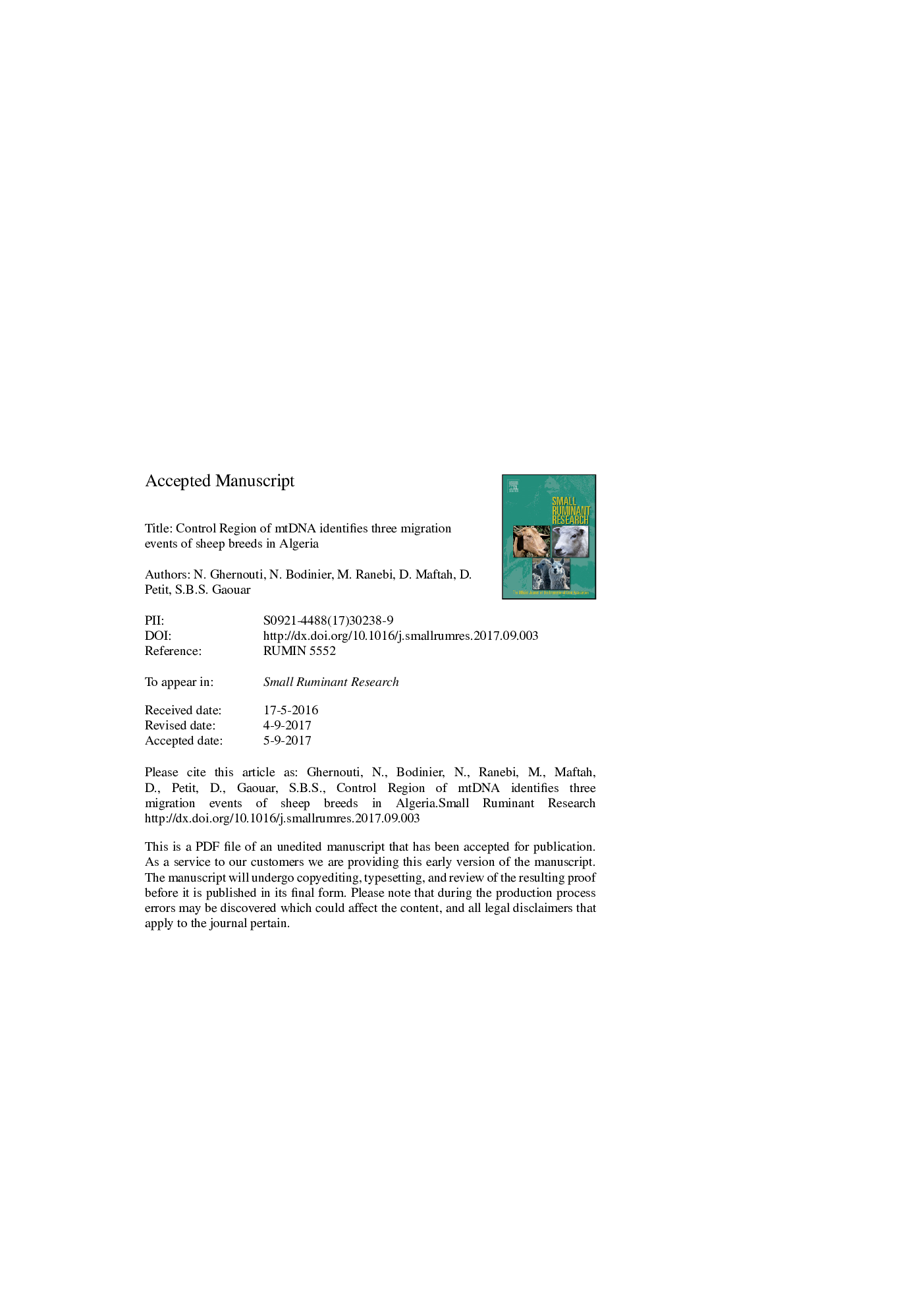| Article ID | Journal | Published Year | Pages | File Type |
|---|---|---|---|---|
| 5544123 | Small Ruminant Research | 2017 | 16 Pages |
Abstract
There are seven main sheep breeds in Algeria, partly investigated by their polymorphism using microsatellite and SNP markers by recent authors. The aim of this work is to determine the phylogenetic origin of the three breeds endemic to this country, e.g. Ouled Djellal, Rembi and Berbère, using the sequences of the whole Control Region of mitochondrial DNA. These three breeds are thin-tailed: Ouled Djellal or Arabic sheep of the steppe is the most important breed in Algeria in term of population size; Rembi or sheep of the Saharan Atlas differs from the previous one by its larger spiral horns reminding the mouflon; Berbère or sheep of the Tell Atlas mountain has a smaller body size than both previous ones and considered as close to the ancestor of the sheep of North Africa. The 23 sequences of these animals were included in a dataset containing 320 sequences of 28 breeds (haplogroups A, B, C, D, and E) to assess their phylogenic position. It appears that 87% of Algerian individuals belong to haplogroup B, the rest to haplogroup C, only recorded among Ouled Djellal breed. Given the scattered position of Algerian individuals within the tree, Minor Allele Frequencies of each breed were calculated to construct a distance tree and a network through Reduced Median method. These data were used to estimate the divergence dates of the endemic Algerian breeds, indicating that they appeared through three independent migration events and not through local differentiations following only one migration event. Ouled Djellal breed would be the latest to come from Middle-East, a fact supported by the significant percentage of C haplotype in our sampling.
Keywords
Related Topics
Life Sciences
Agricultural and Biological Sciences
Animal Science and Zoology
Authors
N. Ghernouti, M. Bodinier, D. Ranebi, A. Maftah, D. Petit, S.B.S. Gaouar,
